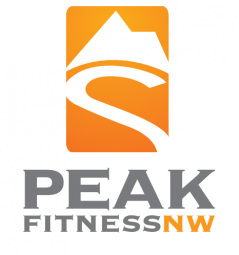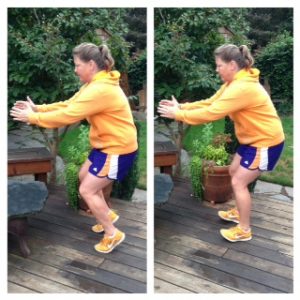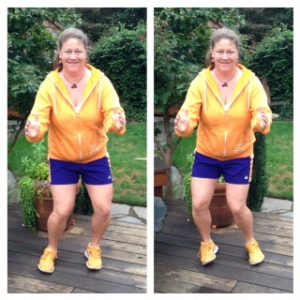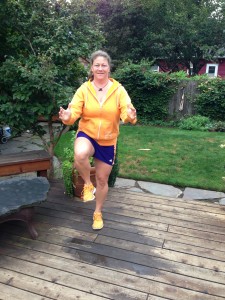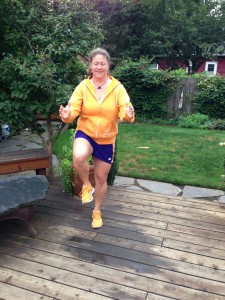Great skiing is characterized by the skiers ability to have a positive, selective effect on any of the skills (balancing, edging, rotary and pressure control movements) at anytime. The foundation of great skiing are balancing movements.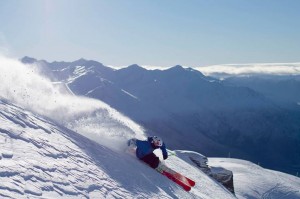
Balancing movements are present in all sports and especially in skiing…when a person is standing, strapped onto “two boards” that like to slide downhill!
First, let me tell you a little more about balance. Balance is the result of the body’s process for maintaining equilibrium. You body’s balance centers are your eyes, ears and feet – better known as visual perception (often effected by fog, blizzard, falling snow when skiing), vestibular functions (effected by loud noises; located in your ears) and proprioception. Proprioception is the body’s ability to react appropriately to external forces and alerts us when balance is threatened. Skiers best source of proprioception is with their feet; your feet are the first to feel what is underneath the ski – icy conditions, powder, a bump, etc.
We all need to work on our balance. Balance is like a muscle – use it or lose it. In addition to skiers, the elderly, stroke patients, Parkinson’s sufferers, all athletes, new exercisers and individuals with poor posture.
Here are some alarming statistics:
- Falls are the leading cause of injury death & most common cause of nonfatal injuries & hospital admissions for trauma in those >65 years.
- 1/3 of those >65 experience a fall each year; 2/3 who fall do so again within 6 months
- 1:20 falls results in a serious injury
- 250,000 Americans fracture their hip each year, resulting in long-term disability, pain, and in 10% of hip fractures, death.
- ½ of all older adults hospitalized for hip fractures cannot return home or live independently after injuries
- 2001, >1.6 million seniors were treated in emergency departments for fall related injuries & nearly 388,000 were hospitalized; >11,600 people >65 died from fall related injuries; >60% of people who die from falls are 75 & older; >75, those who fall are 4-5 times more likely to be admitted to a long term care facility for a year or longer
Now that you are aware of the consequencies for all people if they are unable to maintain/regain balance let me share with you the benefits of including a minimum of five minutes of balance training in your daily workouts:
- Improve posture as you learn to center your weight-bearing joints on top of each other.
- Centered posture improves your muscle balance and leads to more efficient movement
- Develop your kinesthetic awareness, or the “feeling” of proper body positioning. You ability to apply this body awareness to your resistance training and endurance exercises makes for safe, effective and efficient workouts.
- Challenges your equilibrium – improves your control of balance
- Improved response times and a decrease in unnecessary movements, improved performance
- Decreased injuries
Now let me share with you proper posture when standing on solid ground:
- Feet are a comfortable distance apart
- Flex slightly at the knees and ankles
- Ensure the hips align over the ankles, shoulders over the hips, ears over the shoulders and the head stays up with the eyes focusing forward
- Allow the spine to assume its natural curve, slight tension in the abdominals
And proper posture/stance, aka “Awesome Stance”, on skis as demonstrated by Tyler Barnes, PSIA-NW Technical Team Member (and friend):
http://youtu.be/Db1azh7Ci10
- Feet are hip width apart
- Shins maintain forward contact with both boot tongues (accomplished by dorsiflexing the ankle/pulling toes up toward your shin and/or pressing your shin toward your toes)
- Knees are slightly flexed
- Back angle matches shin angle
- Shoulders are rounded forward & ahead of hips
- Elbows are forward & slightly wider than the shoulders
- Hands are forward, slightly wider and lower than the elbows
- Vision forward
Balance conditioning is a way to train the body to make better use of the strength you already have. Here is the key: if you don’t have good balance skills, and you’re thrown off-kilter while skiing, you have to work harder – using big-muscle power to recover. This makes you tired, and soon you start to fail – that “can’t buy a turn” feeling. You waste energy trying to recover, which makes you tired and more out of balance.
The key to efficient balancing movements is a consistent stance width throughout the turn when skiing. In addition, movements to maintain/regain balance should begin at the ankle joint. The ankle joint helps control balance in two directions when skiing – fore and aft balance (heel to toe) and lateral balance (tipping of the foot from little toe to big toe). Today, I would like to demonstrate for you four easy balancing drills that you can introduce to your workouts to awareness of these movements, on land, and then implement them into your skiing.
- Begin in “Awesome Stance”
- Move “roll” toward your toes by pressing your shin toward you foot,
- This movement shifts your COM forward over your toes (when skiing this move would allow your to pressure the tips of your skis)
- Slow move “roll” back to center and to the heels; flex your ankle by lifting the ball of the foot toward your shin. This move “mimics” the sensations we have through the apex to finish of a turn when our skis want to move away from us. Learning this movement allows us to continue to move with and remain balanced over our skis
- Focus on how the ankle articulates and how all the small muscle in the foot and in the front of the shin (tibialias anterior) help to flex the ankle joint.
- Begin in “Awesome Stance”
- Tip and roll one foot to the big toe side of the foot,
- Tip the other foot to the little toe side of the foot.
- This movement should originate in the feet and ankles, FIRST.
- Focus on feeling your feet roll, slowly from one side of the foot to the other, feel each toe rolling to the floor and away from the floor. This focused attention will give you great awareness of what the feet and ankle do inside of your ski boot.
- Begin in “Awesome Stance”
- Lift one knee to hip height and hold it there
- Keep standing leg slightly bent
- Focus on the ankle joint and foot
- How many touches do you make in 30 seconds, on each leg?
- Same as above, eyes closed*
- How many touches do you make in 30 seconds, on each leg?
- *by removing your sight/visual perception we can improve the “strength” of the other balance centers – vestibular and proprioceptors!
Balance training is an important part of athletic and fitness training. As the statistics show, it is as important as doing your cardio to make your heart strong and strength training to make your muscles strong! The above four exercises are a great and simple way to help you improve balance for life and on the slopes, plus they take less than five minutes a day!
Jennifer is the owner of PEAK fitness NW and 20 year Certified Personal Trainer & Health Coach and 10 year Professional Ski Instructor of America. Her soon to be released 12-week PEAK Ski Conditioning program will include these balance exercises and more. Receive new ski, fitness, health and nutrition tips weekly by sharing your name and email to the right side of this blog!
Fall PEAK fitness NW Ski Conditioning programs are beginning, in the Portland Metro area, on Monday, September 9th! Go to www.peakfitnessnw.com/events to register and/or for more information. If you have any questions on how you can kick-start an active lifestyle that incorporates the outdoors contact Jennifer Lockwood. She can be reached at jenn@peakfitnessnw.com or 503.913.8385.
